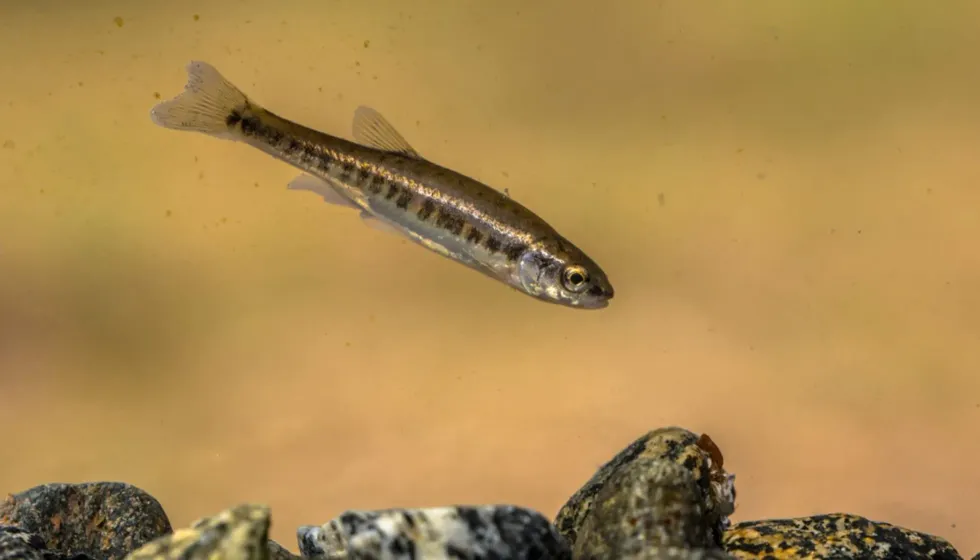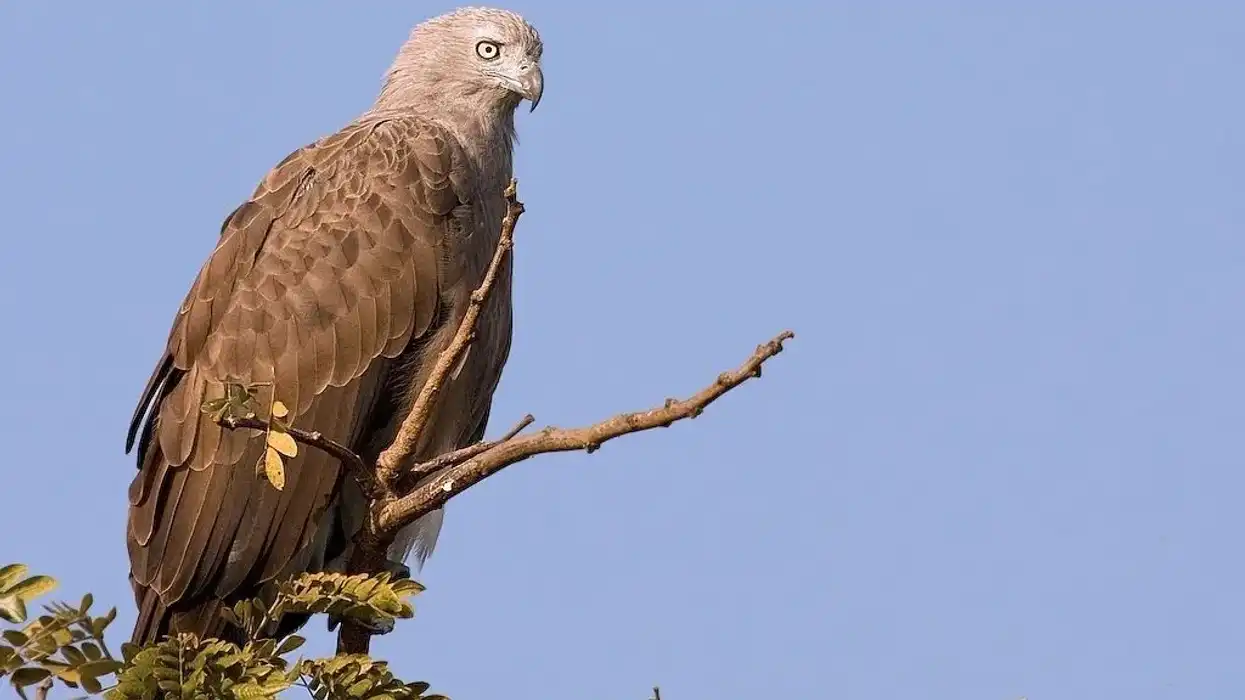Fathead minnow (pimephales promelas) is a fish species that belongs to the family cyprinidae in the order cypriniformes. Minnows are opportunistic feeders and will feed on whatever they set their eyes on.
Fathead minnow (pimephales promelas) are omnivorous in nature and eat food like plant and animal material. They have a very short lifespan and spawn multiple times in a period of 12 months.
Most fathead minnows die after spawning, but the juveniles grow at a rapid speed and, after 45 days, start resembling adults. Fathead minnow's mosquito control qualities make this a popular species for managing the problem of mosquito larvae.
Fathead minnow fishes mostly have a dark olive upper body, and the underparts are silver. They also have a color variant, which is orangish pink in color.
They are social animals and often are found in schools. Here are some interesting facts about the fathead minnow culture for your personal use. Thereafter, do check our other articles on milkfish facts and ornate butterflyfish facts as well.
Fathead Minnow Interesting Facts
What type of animal is a fathead minnow?
Fathead minnow (scientific name pimephales promelas) is a fish of short length and a short lifespan. They are mostly found in slow streams, ponds and lakes in their North American Habitat.
The fathead minnow water quality requirement for survival is of clear and fresh water. Their population is abundant and widely spread in Northern America because of their tolerance to varied environmental conditions.
What class of animal does a fathead minnow belong to?
Fathead minnow (pimephales promelas) also known as the rosy red minnow belongs to the class of ray-finned fishes or Actinopterygii. This aquatic species is widespread throughout Northern America and are freshwater fishes. When it comes to the appearance and description, the fathead minnow is a chubby fish, with a blunt and rounded snout along with short but rounded fins.
How many fathead minnows are there in the world?
There are many fathead minnows in the world and they are listed as a species of Least Concern by the IUCN. This common bait fish can be found in regions of Northern America, Minnesota, Texas, Canada and Mexico.
Where does a fathead minnow live?
The fathead minnow is an aquarium animal that primarily lives in marshy wetlands, lakes, pond, streams, rivers, and almost any waterbody. This game fish is mostly found in freshwater and feeds on both plant and animal material for survival.
What is a fathead minnow's habitat?
A fathead minnow is known for its ability to live in almost any type of water body. Habitats also include water bodies with low levels of oxygen.
Popular fathead minnow habitats include turbid ditches, murky ponds, creeks, marshes, streams, rivers, ponds. This species is most commonly used as baitfish in the United States because it is the favorite food of other popular game fish like rock bass, crappies, perch etc.
Who do fathead minnows live with?
Fathead minnows are school fish and live with other members of their species. These common game fish have short lives and mate several times in a span of a year. Most fathead minnows die after the first year.
How long does a fathead minnow live?
Fathead minnow life cycle is short. The life expectancy of fathead minnows is 2-2.5 years. Most species of fathead minnows die after they reproduce multiple times in a single year. Baby fathead minnows develop at a rapid speed and look similar to the adults after a period of 45 days.
How do they reproduce?
Fathead minnow spawning and the fathead minnow breeding males' reproductive parts occur every 4-5 days, but on average, this aquatic bait fish might even spawn after two days. A female fathead minnow eggs release 100-200 eggs every spawn.
Larger specimens of female fathead minnows can lay 200-400 eggs as well. They are egg clusters that lay their eggs under a flat rock or in the reproductive caves.
The preferred water temperature for breeding is 68-75 degrees Fahrenheit. Fatheads use their dorsal pad as a defense against predators who might prey on their eggs as well as to clean the eggs, till the eggs hatch .
What is their conservation status?
The conservation status of aquatic fathead minnows is listed as the least concern, and their population is abundant and widespread. This fish of North America is a common native egg-layer who is widespread in North America and the number of offspring is increasing steadily.
This aquatic fish species is so easily found that they are used as baitfish. Fathead minnow care is essential to ensure that the species that has been introduced across the United States continues its existence unabated.
Fathead Minnow Fun Facts
What do fathead minnows look like?
When it comes to their appearance, the fathead minnow has a dark olive color upper body and the underparts and sides are silver in color with a small dorsal fin. The other color variant of fathead minnows, known as rosy-red minnows, have an overall orangish-pink body.
They are ray-finned fishes and have a body length of 2-3 in (5-7 cm), and weigh only a few grams.
The head is blunt and they have a small mouth. Breeding males have a huge growth on the nape and around 16 white breeding tubercles on the snout.
How cute are they?
Fatheads are not cute and look like normal aquatic fish with no different physical characteristics and unimpressive dorsal fin. Fatheads are bred in aquariums and for fishermen as they are used as bait fish to catch other large fishes.
They are not kept as pets as they spawn multiple times. They cannot be separated from their group as they are school fish.
How do they communicate?
Fathead minnows are good listeners and can listen to natural sounds underwater with low oxygen levels and save themselves from approaching danger. Fatheads have poor eyesight. They use various chemicals and body displays for communication.
How big is a fathead minnow?
A fathead minnow is only 2-3 in (5-7 cm) of length. Natural females are smaller than male fathead minnows. Fatheads have a bodyweight of few grams and are smaller than blackhead minnows.
How fast can a fathead minnow swim?
Fathead minnows swim at a moderate pace. The fry of fathead minnows swim even slower in mild low oxygen levels of water temperatures and become easy prey to predator fish like bluegills.
The exact speed at which they swim in natural low oxygen water temperatures is currently unknown. They use their sense of hearing while swimming to escape from predators.
How much does a fathead minnow weigh?
Fathead minnows only grow about 2.75-3.94 in (7-10 cm). Some male fathead minnow size specimens can grow bigger than that and the largest specimen of fathead minnows ever recorded was a male weighing 0.24 oz (0.006 kg) and measured 3.11 in (7.8 cm). The average body weight of fathead minnows is between 1.5 lb (0.7 kg).
What are the male and female names of the species?
There are no distinct names for the male and female species of fathead minnows. They are only called male fathead minnows and female fathead minnows.
What would you call a baby fathead minnow?
A baby fathead minnow is called a fry or larvae in the lakes or a pond. They are slow swimmers and are often captured by other fish. They also grow at a rapid speed and, after 45 days, look similar to adults.
What do they eat?
Fathead minnows eat both animal and plant material in mild temperatures. Fathead minnow food and fathead minnow diet consist of algae, zooplanktons, protozoa, debris of duck and goose, mosquito larvae, insects, invertebrates, decaying leaf litter or other vegetation, and fish like stone rollers, chubs, fatheads, crustaceans, fallfish, carps, shiners, dances.
Are they eaten by humans?
No the fathead minnows population is not consumed by human beings but they are used as bait fish or feeder fish to catch bigger fish. Although, fathead minnow fry sounds delicious.
Would they make a good pet?
A pet fathead minnow is not preferred. Their population live short lives and prefer living with their school. After mating for one breeding males season, most fathead minnows usually die. Minnows should not be kept as pets, just because they only live for around a year and spawn and feed throughout their lifetime.
Did you know...
The male fathead minnows exhibit the phenomenon of allopaternal care which suggests that they acquire and care for the eggs of other males.
Fathead minnow diseases may vary from critical to serious.
How often do fathead minnows spawn?
Fathead minnows usually spawn after every 4-5 days and release 100-200 eggs per spawn. But, it is possible that they could spawn after a span of two days. Most fathead minnows die after spawning in the first breeding season.
What alarm signal does the fathead minnow possess?
Ostariophysan fishes, which include fathead minnows, possess an alarm substance, or Schreckstoff also called fright substance which increases their survival. Predators are attracted to this alarm pheromone and let the prey escape as other predatory fishes interrupt their feeding activity.
Here at Kidadl, we have carefully created lots of interesting family-friendly animal facts for everyone to discover! For more relatable content, check out these mutton snapper facts, or cherry barb facts.
You can even occupy yourself at home by drawing one on our salmon coloring pages.
*Please note that this is an image of an Eurasian minnow, not a fathead minnow. If you have an image of a fathead minnow please let us know at hello@kidadl.com.









